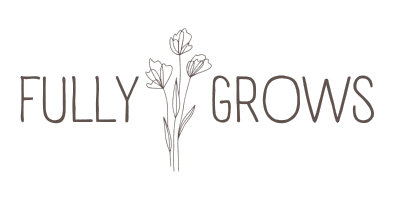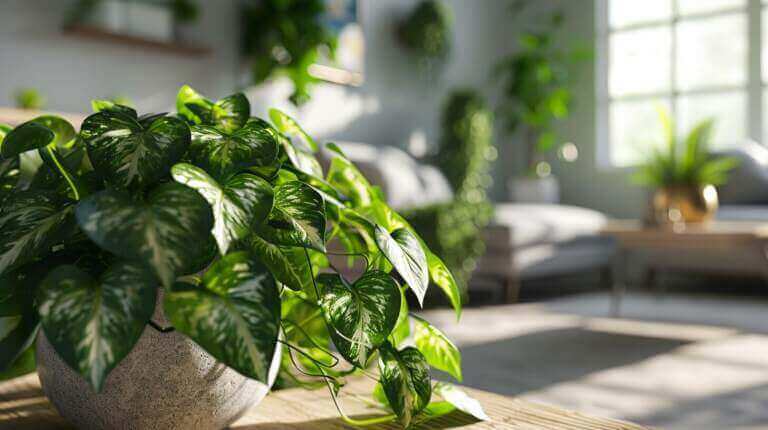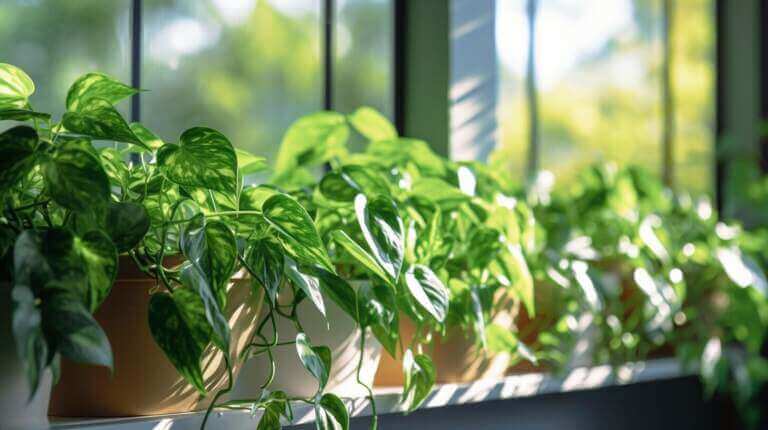The Swiss cheese plant, also known as Monstera adansonii, is a tropical perennial native to Central and South America. It gets its name from the distinctive holes that develop in its large, heart-shaped leaves as it ages. This plant is typically grown indoors and has a fast growth rate. To promote optimal growth and shape, pruning is an important part of monstera plant care. Pruning helps control the size and shape of the plant, encourages new growth, and removes dead or damaged leaves. You will need pruning shears to make clean and precise cuts while pruning your monstera plant. With the right pruning techniques, you can ensure the health and vitality of your indoor swiss cheese plant.
Key Takeaways:
- Pruning is an essential part of monstera plant care to promote optimal growth and shape.
- Use pruning shears for clean and precise cuts while pruning your monstera plant.
- Pruning helps control the size and shape of the plant, encourages new growth, and removes dead or damaged leaves.
- Proper pruning techniques ensure the health and vitality of your indoor swiss cheese plant.
- Regular pruning can help maintain an aesthetically pleasing appearance and prevent the plant from outgrowing your space.
Proper Care and Maintenance for Monstera Swiss Cheese Plants
When it comes to caring for your Monstera Swiss Cheese Plants (Monstera deliciosa), providing the right care and maintenance is crucial for their health and growth. These tropical plants thrive in bright, indirect sunlight, making them ideal for indoor settings. To ensure optimal growth, follow these essential care tips:
- Adequate Light: Place your Monstera plant in a location that receives bright, indirect sunlight. Avoid placing it in direct sunlight as it can cause leaf burn.
- Humidity: Monstera plants prefer high humidity environments. Maintain a humidity level above 50 percent by using a humidifier or placing a tray of water near the plant.
- Watering: Keep the soil consistently moist, but not soaked. Water your Monstera plant when the top inch of soil feels dry. Avoid overwatering, as it can lead to root rot.
- Fertilization: Feed your Monstera plant once a month during the growing season. Use a balanced liquid fertilizer to provide essential nutrients for healthy growth.
- Repotting: Repot your Monstera plant every two years or when it outgrows its current container. Choose a slightly larger pot with ample drainage and use fresh, well-draining potting mix.
By following a consistent care routine, you can ensure the health and vitality of your Monstera Swiss Cheese Plant and enjoy its stunning foliage for years to come.
Aerial Roots: Sign of a Happy Plant
If you notice long, dangling roots growing from the stems or emerging from the nodes of your Monstera plant, don’t be alarmed. These are aerial roots, and they are a natural characteristic of Monstera deliciosa. Aerial roots serve several purposes:
- Anchor the plant to trees or nearby structures in its natural habitat
- Absorb moisture and nutrients from the air
- Provide additional support and stability to the plant
While aerial roots may not be necessary for the plant’s survival indoors, they indicate that your Monstera plant is in a happy and healthy state. If you prefer a neater appearance, you can trim the aerial roots, but it is not essential for the plant’s well-being.
In conclusion, caring for your Monstera Swiss Cheese Plant involves providing the right amount of light, humidity, water, fertilization, and repotting when necessary. Paying attention to these essential factors will ensure that your plant thrives and continues to impress with its iconic Swiss cheese-like foliage.
Controlling Growth and Size of Monstera Swiss Cheese Plants
Monstera swiss cheese plants have a tendency to grow rapidly and can quickly outgrow their designated space. To maintain control over the growth and size of your indoor monstera plant, it’s important to utilize effective techniques. Trim and prune your swiss cheese plant regularly to shape it and prevent excessive growth. Pruning should be done in the spring using sterile pruning shears to ensure clean cuts. If you want to encourage new growth, consider trimming the stem just above a leaf node. This will stimulate the growth of new shoots and result in a bushier plant. Propagation is another method to control the size of your monstera. Take cuttings of the plant and root them in a separate pot to grow new plants. Pruning and propagating your monstera will help keep its size manageable and ensure a healthy, beautiful plant.
Trimming and Pruning for Shape and Size Control
Regular trimming and pruning are essential for maintaining the shape and size of your monstera swiss cheese plant. By selectively removing branches and leaves, you can prevent the plant from becoming too dense or overgrown. Use a pair of sharp, sterile pruning shears to make clean cuts and avoid damaging the plant. When pruning, focus on removing any dead or damaged leaves, as well as any branches or stems that are growing in undesirable directions. Additionally, you can trim the stem just above a leaf node to encourage new growth and create a fuller, more compact plant. Remember to prune your monstera in the spring when it is actively growing to minimize stress on the plant.
Propagation for Size Control and New Plants
Propagating your monstera swiss cheese plant is an effective way to control its size and create new plants. To propagate your plant, start by selecting a healthy stem with at least two leaves. Use a sharp, sterile knife or pruning shears to make a clean cut just below a node. Nodes are small bumps on the stem where leaves or aerial roots emerge. After you’ve taken the cutting, place it in a jar or glass of water, making sure the node is submerged. Change the water every few days to prevent bacterial growth. Once roots have formed, transfer the cutting to a pot with fresh soil and continue to care for it as you would a mature monstera plant. By propagating your monstera, you can control its size and create new plants to share or enjoy in different locations.
| Techniques for Controlling Growth and Size of Monstera Swiss Cheese Plants | Benefits |
|---|---|
| Trimming and pruning | Shapes the plant, prevents excessive growth, encourages new growth |
| Propagation | Controls size, creates new plants for different locations |
Common Issues and Troubleshooting for Monstera Swiss Cheese Plants
When caring for Monstera Swiss Cheese Plants, it’s common to encounter some issues along the way. Understanding these problems and knowing how to troubleshoot them can help ensure the health and vitality of your plant.
Yellow Leaves:
One of the most common issues with Monstera plants is yellowing leaves. This can be caused by both underwatering and overwatering. To address this problem, it’s important to find the right balance of moisture for your plant. Ensure that you are watering your Monstera regularly, allowing the soil to dry out slightly between waterings. Monitor the moisture level and adjust accordingly to prevent yellowing leaves.
Black Marks on Leaves:
If you notice black marks on the leaves of your Monstera plant, it may be a sign of exposure to direct sunlight. Monstera plants thrive in bright but indirect light. If your plant is receiving intense sun for extended periods, it can lead to black marks and damage to the leaves. To solve this issue, move your plant to a location with less direct sunlight or provide it with a sheer curtain to filter the light.
Pruning Dead Leaves:
Regular pruning is an important part of Monstera plant care. Dead or damaged leaves should be pruned to maintain the health and aesthetics of the plant. Use sterile pruning shears to make clean cuts and remove any dead or yellowing leaves. This will promote new growth and ensure that your Monstera plant stays vibrant and thriving.
Propagation:
If you encounter persistent issues with your Monstera plant, propagating it through cuttings can be a helpful solution. Taking cuttings from healthy stems and propagating them in water or well-draining soil can give you a fresh start. This process allows you to nurture new plants and ensure their future growth and health.
By addressing these common issues and troubleshooting, you can maintain the health and beauty of your Monstera Swiss Cheese Plant. Remember to monitor the moisture level, provide appropriate light exposure, and prune as needed. With proper care, your Monstera will continue to thrive and bring joy to your indoor space.
FAQ
How often should I prune my monstera swiss cheese plant?
Pruning your monstera plant should be done in the spring, once a year, using sterile pruning shears.
What tools do I need for pruning my monstera swiss cheese plant?
To make clean and precise cuts while pruning your monstera plant, you will need pruning shears.
How can I promote optimal growth and shape in my monstera swiss cheese plant?
Pruning is an important part of monstera plant care. It helps control the size and shape of the plant, encourages new growth, and removes dead or damaged leaves.
How often should I water my monstera swiss cheese plant?
To keep your monstera plant healthy, water it regularly to keep the soil consistently moist but not soaked.
How often should I fertilize my monstera swiss cheese plant?
Fertilize your swiss cheese plant monthly during the growing season with a balanced fertilizer.
When should I repot my monstera swiss cheese plant?
Repot your monstera plant every two years in a slightly larger container with fresh potting mix to provide the roots with enough space to spread out.
How can I control the growth and size of my monstera swiss cheese plant?
Regular trimming and pruning, as well as moving the plant to a different location or repotting it in a slightly smaller container, can help control the growth and size of your monstera swiss cheese plant.
What should I do if the leaves of my monstera swiss cheese plant are turning yellow?
Yellowing leaves can be a sign of overwatering or underwatering. Ensure that the soil moisture level is appropriate for optimal plant health.
How can I prevent black marks from appearing on the leaves of my monstera swiss cheese plant?
Black marks on the leaves can be caused by direct sunlight. Make sure to place your plant in an area where it is not exposed to prolonged periods of intense sun.
What should I do if my monstera swiss cheese plant is not growing well or losing leaves?
Inadequate light exposure can result in slow growth or dropped leaves. Ensure that your monstera plant receives bright but indirect sunlight.
How can I propagate my monstera swiss cheese plant?
If you encounter any problems with your monstera plant, propagating it by taking cuttings is a great way to start fresh and ensure future growth and health.







